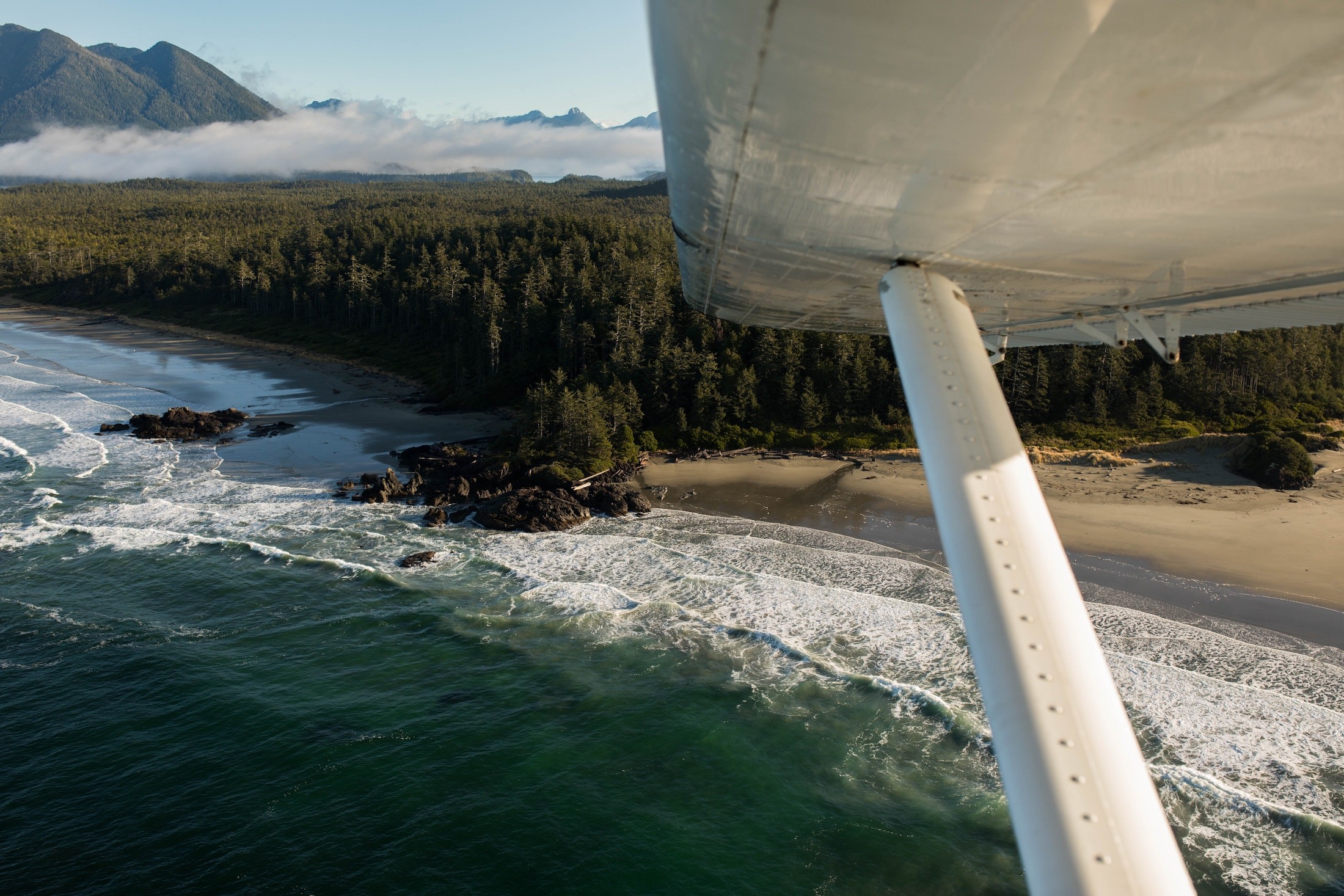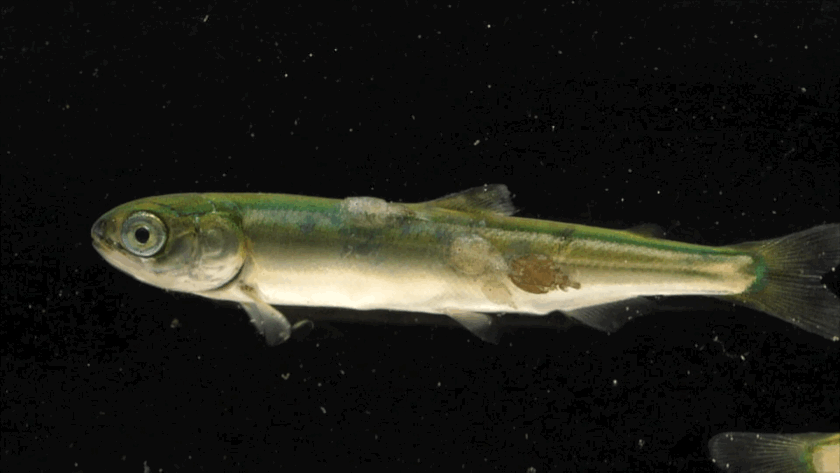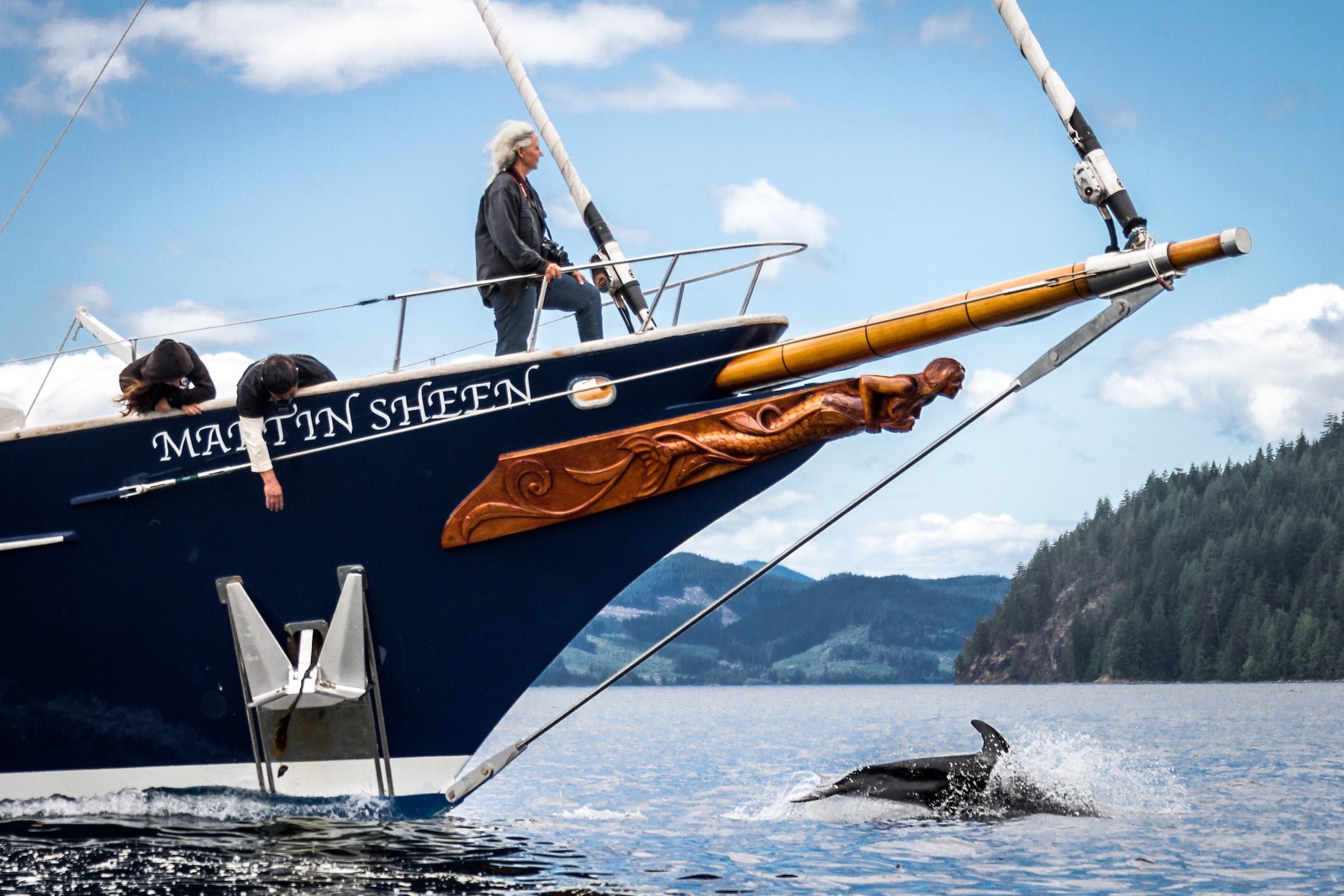
Celebrating 7 years of The Narwhal — and gearing up for the next 7
Between a fresh take on engagement and our new life on video, our team is...
There was a sight for sore eyes in late July off the coast of Tofino, when a Dutch-built, Vancouver-registered 30-metre barge, Salar, was towed out of Clayoquot Sound waters, hopefully never to return.
The vessel — looking like something out of Terry Gilliam’s fantasist movie Brazil — was brought to Tofino to battle infestations of sea lice, a persistent by-product of industrial salmon farming that attacks farmed fish and, incidentally, wild juvenile salmon.
That the name, Salar, is derived from the species name for Atlantic salmon, Salmo salar, may seem a rude irony to some on the West Coast where the fabled Oncorhynchus, or wild Pacific salmon, are endangered by the industrialization of salmon rearing not just in Clayoquot Sound, but in the Broughton Archipelago on the east side of Vancouver Island.
Meares Island, immediately to the east of the resort municipality of Tofino, is among the most iconic locations on Canada’s West Coast when it comes to the protection of rare old-growth coastal temperate rainforests.
It was here that the ritual of clear-cut logging was slowed 35 years ago. The Meares Island blockade in 1984 lit a fuse that blew up into a full-scale War in the Woods that dogged successive provincial governments — Socred and NDP and Liberal alike — until much of Clayoquot Sound was “protected,” as were large swaths of Haida Gwaii and, eventually, impressive tracts of the so-called Great Bear Rainforest.
Where there was a War in the Woods, now there’s a War on the Waters.

A view of Clayoquot Sound near Tofino. Photo: Shayd Johnson
To summer tourists who savour the “eco” tourism that has taken the place of some, if not all, logging, the uncut slopes of Meares Island, and a gorgeous necklace of inlets and islets on glittering inshore waters, perfectly disguise an environmental catastrophe that constitutes, literally, a pestilence on our coast.
Parked this summer (one hesitates to use the term “moored”) in sight of the Fourth Street dock in Tofino, the Salar supplemented the onshore processing plant of Cermaq, a Norway-based salmon farming company owned by Mitsubishi that operates in Chile, Norway and Canada.
Farmed fish, packed together in their thousands in pens, like battery chickens, are subject to disease, including outbreaks of a Norwegian strain of piscine orthoreovirus, or PRV — something Canada’s Department of Fisheries and Oceans refused to screen for before a federal court ordered it to do so.
Farmed fish are sitting ducks for sea lice, too. Industry has struggled to contain the sea lice menace.
Last year, Cermaq took to sucking afflicted fish out of their net pens and bathing them in a solution of pesticide designed to dislodge the lice. The fish went back into their pens (and eventually made their way into the mouths of consumers), the chemicals were dispersed into the marine environment and life went on.
But some lice developed an immunity to drugs used to remove them.
This year’s “solution” was to deploy the Salar, or what industry calls a “hydrolicer” that was built to pressure-wash lice to dislodge them rather than use chemicals, making it “100 per cent pollution-free and thus environmentally friendly” according to a soothing review in Fish Farming Expert.
But at least farmed fish get a shake.
Wild smolts — which have no choice other than to migrate past open net pens — pick up lice in such numbers that they cannot survive.
Regulations require industry keep parasite levels below a certain threshold. During this past spring and early summer three of Cermaq’s farms exceeded sea lice levels in violation of federal rules.
During the early summer wild salmon migration season in Clayoquot Sound, I watched filmmaker and naturalist Tavish Campbell document juvenile salmon covered in sea lice.
Sometimes ten lice clamped to one tiny smolt — fish so young they have yet to develop scales and thus are defenceless against parasitic attacks.
On an excursion for the Cedar Coast Field Station on Vargas Island, Campbell, perhaps best known for his short film Bloodwater, said, “the focus has been on the Broughton, but it’s even worse out here.”
“Clayoquot Sound is close to the point where there’s just not going to be any wild fish any more,” Tavish Campbell told me, looking up for a moment from filming chum salmon smolts he sampled.
Bonnie Glambeck, a director of the conservation group, Clayoquot Action, told The Tyee, “At one point during the out-migration, sampling of smolts at the Cedar Coast Field Station found 100 per cent of the juveniles were infected with sea lice.”
Mack Bartlett, research coordinator at the Cedar Coast station, told me the effect of sea lice on wild salmon was devastating. “We have [wild fish] returning in their tens, when there used to be thousands. We could see the disappearance of chinook salmon in Clayoquot Sound if we don’t come up with a solution.”
In an open letter in the Tofino-Ucluelet Westerly News Cermaq’s managing director, David Kiemele, admitted the company was “unable to effectively manage sea lice populations for a variety of reasons” during the critical wild salmon migration period from March to June.
So much for Salar.

Sea lice on a juvenile wild salmon in the Broughton Archipelago. Video: Tavish Campbell
You would think that Fisheries and Oceans Canada would shut down Cermaq’s operations pronto, but instead, the Government of Canada announced it was “moving forward on developing an action plan to address the enforcement of sea lice regulations in coastal waters.”
Which brings a tired laugh of disbelief from Homiskanis Don Svanvik, elected chief of the ‘Namgis First Nation, in Alert Bay.
“One of the biggest issues is that people don’t believe that our government would not be telling us the truth, or would not be doing all they can to help wild salmon. And in fact, they’re not.”
Svanvik’s people have been at the forefront of attempts to get fish farms out of their waters in the Broughton Archipelago, and onto dry land — as with the band-owned Kuterra land-raised salmon enterprise that has shown it can be done.
Open-net pen fish farms, Svanvik told me, “are this staging place for disease and sea lice that were never (previously) in place for the wild salmon returning and going out to sea. The logical place for those is on land, where they cannot impact wild fish.”
“They’ve got to go. Let’s get them out. Let’s not have any risk to our salmon up here.”
The key to getting fish farms out of open waters, Svanvik believes, is “when the population says no, that’s enough. You can’t do this anymore.”
Back in Tofino, in an echo of the Meares Island logging blockade a third of a century ago, signs of the salmon farming’s denouement are evident.
In late June, a new generation of protesters joined with holdovers from the War in the Woods as about 200 protesters took to local waters in the wake of the R/V Martin Sheen, a sailboat operated by the Sea Shepherd Conservation Society, which has taken up the fight against salmon farms. A flotilla of small craft motored to and circled Cermaq’s farm on Warne Island.

The R/V Martin Sheen, a research vessel used as part of the Sea Shepherd Conservation Society’s ‘Operation Virus Hunter,’ a campaign to document the impacts of open-net fish farms on the B.C. coast. Photo: Sea Shepherd Conservation Society
Tla-o-qui-aht First Nation member Tsimka Martin, one of the organizers of the flotilla, co-founded a group called the Nuuchahnulth Salmon Alliance that is determined to see fish farms — 27 of them, operated by three companies — evicted from Clayoquot Sound.
“These are cess pools, we need to remove them from our waters,” she says in a video posted on the alliance’s Facebook page.
There have been public marches, a rally outside Cermaq’s plant, boardings of Creative Salmon farm operations, an Indigenous talking circle — all chapters in the textbook endgame for an industry that has worn out whatever welcome it had in the first place.
Because there are jobs involved, of course politicians will have a say.
Unlike Jay Inslee, the governor of Washington State who is clearing fish farms out of the Salish Sea and vows to keep them out, Premier John Horgan has been hesitant to make significant changes.
Indigenous political leaders are meanwhile divided. While some communities benefit economically from the aquaculture industry operating in their traditional waters, others argue the protection of wild salmon should be see as critical to both reconciliation and efforts to free Indigenous nations from their economic dependence on extractive industries.
But time is running out for all — to save salmon from going the way of the East Coast cod.
“The salmon can be a messenger,” Don Svanvik says. “When we start doing things better, they’ll be coming back more. Then we’ll know we’re headed in the right direction.”
And then perhaps the people of Clayoquot Sound — indeed all over Vancouver Island — can get back to fighting the War in the Woods, which, it turns out — a third of a century later — isn’t really over after all …
Get the inside scoop on The Narwhal’s environment and climate reporting by signing up for our free newsletter. On a warm September evening nearly 15...
Continue reading
Between a fresh take on engagement and our new life on video, our team is...

The public has a few days left to comment on Doug Ford’s omnibus development bill....

115 billion litres, 70 years to fix, $5.5 billion in lawsuits
